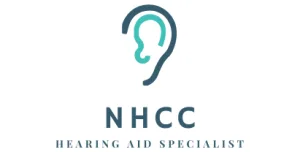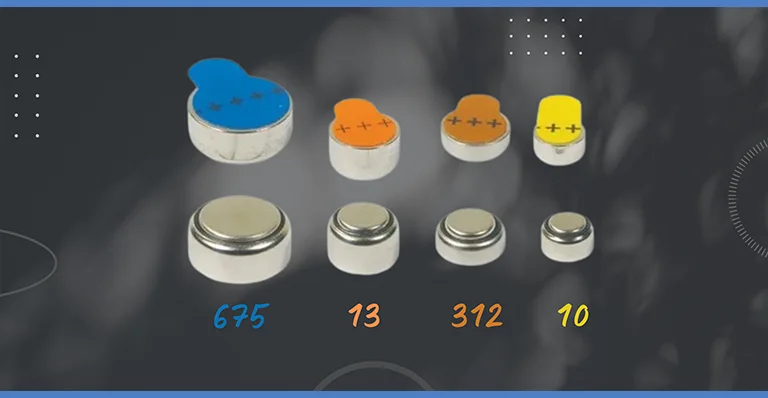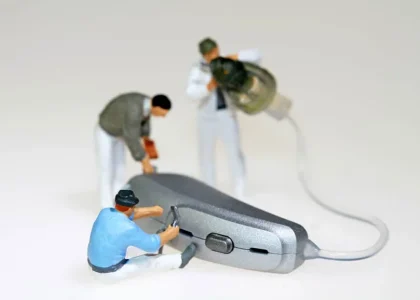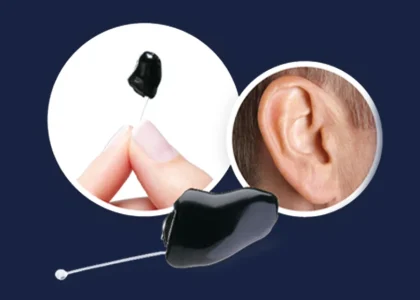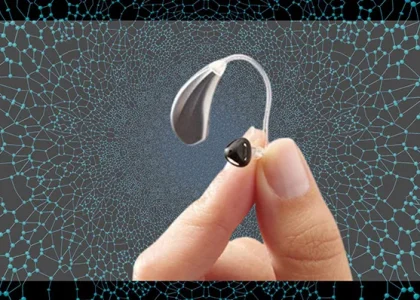Introduction
Hearing aids have revolutionized the lives of millions, providing a crucial solution for those with hearing impairments. As with any electronic device, the effectiveness of a hearing aid is significantly influenced by its power source. Traditionally, disposable batteries have been the standard choice, but the advent of rechargeable hearing aid batteries is changing the landscape. These modern batteries offer a range of benefits that cater to the needs of today’s users, from cost savings to environmental sustainability.
This article delves into the world of rechargeable hearing aid batteries, exploring their history, types, benefits, and the considerations that come with them. Whether you’re a long-time hearing aid user or new to this technology, understanding the ins and outs of rechargeable batteries can help you make an informed decision that enhances your auditory experience and fits seamlessly into your lifestyle. Join us as we unpack everything you need to know about rechargeable hearing aid batteries and discover how this innovation is reshaping the future of hearing aid technology.
Common Hearing Aid Batteries (Non-Rechargeable)
Hearing aid batteries come in various types, each denoted by a color code. Here are the common types:
1. Size 10 (Yellow):
These are the smallest hearing aid batteries and are typically used for completely-in-the-canal (CIC) or invisible-in-canal (IIC) hearing aids.
Description and Characteristics:
Size 10 batteries are the smallest among commonly used hearing aid batteries. They typically measure about 5.8 mm in diameter and 3.6 mm in height. These batteries use zinc-air technology, activated when a sticker on the back of the battery is removed, allowing air to enter and activate the cell.
Advantages:
– Discreetness: Due to their small size, size 10 batteries fit discreetly into tiny hearing aids such as completely-in-the-canal (CIC) or invisible-in-canal (IIC) models, making them virtually invisible when worn.
– Portability: Their compact size makes them easy to carry around as spares, convenient for individuals who lead active lifestyles or travel frequently.
– Compatibility: Size 10 batteries are compatible with a wide range of small hearing aids, offering versatility for users with different hearing aid models.
2. Size 312 (Brown):
Slightly larger than size 10, these are often used in in-the-canal (ITC) or some smaller behind-the-ear (BTE) hearing aids.
Description and Characteristics:
Size 312 batteries are slightly larger than size 10, measuring approximately 7.9 mm in diameter and 3.6 mm in height. They also use zinc-air technology and require a sticker to be removed to activate.
Advantages:
– Balanced Performance: Size 312 batteries offer a balance between size and power, making them suitable for a variety of hearing aid styles, including in-the-canal (ITC) and some smaller behind-the-ear (BTE) models.
– Extended Battery Life: Compared to size 10 batteries, size 312 batteries generally provide longer battery life, making them suitable for individuals with moderate hearing loss who require reliable performance throughout the day.
– Ease of Handling: While larger than size 10, size 312 batteries are still relatively small and easy to handle, making them convenient for users with dexterity issues or limited fine motor skills.
3. Size 13 (Orange):
Larger than size 312, these batteries are used in a wide range of hearing aids, including BTE and some larger ITE models.
Description and Characteristics:
Size 13 batteries are larger, measuring around 7.9 mm in diameter and 5.4 mm in height. They offer more power and capacity compared to size 10 and size 312 batteries, suitable for a wider range of hearing aids, including larger behind-the-ear (BTE) and some in-the-ear (ITE) models.
Advantages:
– Extended Battery Life: Size 13 batteries provide longer usage time and higher power output, making them suitable for individuals with mild to severe hearing loss who require longer-lasting batteries.
– Versatility: These batteries are compatible with a broad range of hearing aid styles and sizes, offering versatility for users who may switch between different hearing aid models over time.
– Cost-Effectiveness: While larger than size 10 and size 312 batteries, size 13 batteries often offer better value for money in terms of cost per battery and cost per hour of usage due to their longer lifespan.
4. Size 675 (Blue):
The largest commonly used hearing aid batteries, these are suitable for high-power hearing aids, often behind-the-ear (BTE) models.
Description and Characteristics:
Size 675 batteries are the largest among common hearing aid batteries, measuring approximately 11.6 mm in diameter and 5.4 mm in height. They are designed for high-power hearing aids, particularly behind-the-ear (BTE) models.
Advantages:
– High Power Output: Size 675 batteries deliver the highest power output among common battery sizes, making them suitable for severe to profound hearing loss and advanced hearing aid features such as wireless connectivity and streaming.
– Extended Battery Life: Due to their larger size and higher capacity, size 675 batteries offer the longest battery life among common battery sizes, minimizing the need for frequent battery changes and providing reliable performance throughout the day.
– Compatibility with High-Power Devices: These batteries are specifically designed to meet the power demands of high-performance hearing aids, ensuring optimal performance and functionality for users with significant hearing loss and complex listening needs.
These batteries are typically zinc-air batteries, which means they activate when exposed to air, and they usually come with protective tabs that need to be removed before use. The specific battery type required for a hearing aid depends on the device’s power requirements and size constraints. It’s important to check your hearing aid’s manual or consult with your audiologist to ensure you’re using the correct type of battery.
–
Comparison Of Common Hearing Aid Batteries
Here’s a comparison of the common types of hearing aid batteries:
1. Size 10 (Yellow):
– Size: Smallest among common hearing aid batteries.
– Typical Use: Ideal for completely-in-the-canal (CIC) or invisible-in-canal (IIC) hearing aids.
– Lifespan: Typically has a shorter lifespan compared to larger batteries due to its smaller size and lower capacity.
– Advantages: Fits discreetly into small hearing aids, suitable for devices with limited space.
– Disadvantages: May require more frequent replacement due to lower capacity.
2. Size 312 (Brown):
– Size: Slightly larger than size 10 batteries.
– Typical Use: Commonly used in in-the-canal (ITC) or some smaller behind-the-ear (BTE) hearing aids.
– Lifespan: Offers a balance between size and lifespan, providing adequate power for moderate hearing loss.
– Advantages: Fits a wider range of hearing aids while still offering a relatively compact size.
– Disadvantages: May not be suitable for high-power hearing aids or those with very small compartments.
3. Size 13 (Orange):
– Size: Larger than size 312 batteries.
– Typical Use: Used in a wide range of hearing aids, including larger behind-the-ear (BTE) and some in-the-ear (ITE) models.
– Lifespan: Offers longer battery life compared to smaller batteries, suitable for mild to severe hearing loss.
– Advantages: Provides more power and longer usage time, suitable for a broader range of hearing aid types.
– Disadvantages: Bulky for smaller hearing aids, may not be suitable for very discreet or compact designs.
4. Size 675 (Blue):
– Size: Largest among common hearing aid batteries.
– Typical Use: Designed for high-power hearing aids, often behind-the-ear (BTE) models.
– Lifespan: Offers the longest battery life and highest power output among common battery sizes.
– Advantages: Suited for severe to profound hearing loss, provides ample power for demanding hearing aid features.
– Disadvantages: Bulky and may not fit into smaller hearing aid designs, higher cost compared to smaller batteries.
In summary, the choice of hearing aid battery size depends on factors such as the size of the hearing aid, the degree of hearing loss, and the desired battery life. It’s essential to select the appropriate battery size recommended by your audiologist or hearing healthcare professional for optimal performance and comfort.
Types of Rechargeable Hearing Aid Batteries
Rechargeable hearing aid batteries have evolved to meet the demands of modern hearing aid users, offering enhanced performance and convenience. Currently, two main types of rechargeable batteries are commonly used in hearing aids: Nickel-Metal Hydride (NiMH) and Lithium-Ion (Li-Ion). Each type has distinct characteristics, advantages, and disadvantages.
1. Nickel-Metal Hydride (NiMH) Batteries
Description and Characteristics:
– NiMH batteries have been used in various electronic devices for years, including hearing aids.
– They are rechargeable and offer a reliable power source for many hours of continuous use.
Advantages:
– Cost-Effective: Generally cheaper than lithium-ion batteries.
– Safe and Stable: Proven technology with a long track record of safe usage.
– Environmentally Friendly: Contains fewer toxic metals compared to older battery types like nickel-cadmium (NiCd).
Disadvantages:
– Lower Energy Density: Holds less charge compared to lithium-ion batteries, meaning they may require more frequent recharging.
– Memory Effect: Over time, NiMH batteries can suffer from memory effect, reducing their overall capacity if not fully discharged before recharging.
2. Lithium-Ion (Li-Ion) Batteries
Description and Characteristics:
– Li-Ion batteries are the newer standard in rechargeable battery technology and are widely used in consumer electronics, including hearing aids.
– Known for their high energy density and efficiency.
Advantages:
– High Energy Density: Provides longer battery life and more usage time between charges.
– Lightweight: Li-Ion batteries are lighter than NiMH batteries, making them ideal for discreet and comfortable hearing aids.
– Fast Charging: Capable of quicker charging times, providing more convenience for users.
– No Memory Effect: Li-Ion batteries do not suffer from memory effect, maintaining their full capacity throughout their lifespan.
Disadvantages:
– Higher Cost: Typically more expensive upfront compared to NiMH batteries.
– Degradation Over Time: Although they last longer on a single charge, Li-Ion batteries can degrade over time, losing capacity after a few years of use.
– Safety Concerns: Although rare, Li-Ion batteries can pose a fire risk if damaged or improperly handled.
Comparison of NiMH and Li-Ion Batteries
| Feature | NiMH Batteries | Li-Ion Batteries |
| Energy Density | Lower | Higher |
| Weight | Heavier | Lighter |
| Charging Speed | Slower | Faster |
| Memory Effect | Yes | No |
| Cost | Lower | Higher |
| Longevity | Moderate lifespan | Longer lifespan |
| Safety | Very safe | Generally safe |
Understanding the differences between NiMH and Li-Ion batteries can help you choose the right type of rechargeable battery for your hearing aids, ensuring that your hearing device fits seamlessly into your lifestyle and meets your specific needs.
Benefits of Hearing Aid Batteries
Rechargeable hearing aid batteries offer numerous advantages that enhance the user experience, from convenience and cost savings to environmental benefits and improved performance. Here’s a closer look at these benefits:
Convenience
– No Need for Frequent Battery Changes:
– Rechargeable batteries eliminate the hassle of frequently changing small, disposable batteries. Users simply place their hearing aids in a charging station, typically overnight, ensuring they start each day with a full charge.
– Easier for Individuals with Dexterity Issues:
– Handling tiny disposable batteries can be challenging for individuals with limited dexterity or visual impairments. Rechargeable batteries simplify the process, reducing frustration and making hearing aid maintenance much easier.
Cost-Effectiveness
– Long-Term Savings Compared to Disposable Batteries:
– While the initial cost of rechargeable hearing aids and their charging units might be higher, the long-term savings are significant. Users avoid the recurring expense of purchasing disposable batteries, which can add up over time. Over the lifespan of the hearing aids, rechargeable batteries prove to be a more economical choice.
Environmental Impact
– Reduction in Waste from Disposable Batteries:
– Disposable batteries contribute to a significant amount of waste, given their frequent replacement. Rechargeable batteries reduce the volume of battery waste, contributing to less environmental pollution.
– Eco-Friendly Alternative:
– Rechargeable batteries are a more sustainable option. By reducing the number of disposable batteries that end up in landfills, users help decrease the environmental footprint associated with battery disposal.
Performance
– Consistent Power Supply:
– Rechargeable batteries provide a more consistent power output compared to disposable batteries, which can start to lose power as they near the end of their life. This consistent power supply ensures that hearing aids function optimally throughout the day.
– Improved Sound Quality and Device Performance:
– With a steady power supply, rechargeable hearing aids can deliver better sound quality and overall performance. Users experience fewer interruptions and can rely on their devices for better sound clarity and reliability.
Additional Benefits
– User-Friendly Design:
– Rechargeable hearing aids often feature user-friendly designs with easy-to-use charging docks and indicators to show battery status, making them straightforward to use.
– Improved Hygiene:
– Handling disposable batteries frequently can introduce dirt and oils into the hearing aid, potentially affecting its performance. Rechargeable systems reduce this risk by minimizing the need to open battery compartments frequently.
– Travel-Friendly:
– With portable charging options, rechargeable hearing aids are convenient for travelers. Users can recharge their hearing aids using portable power banks or car chargers, ensuring their devices are always ready to use.
In summary, rechargeable hearing aid batteries offer significant benefits that enhance user convenience, provide long-term cost savings, reduce environmental impact, and improve device performance. For anyone using hearing aids, these advantages make rechargeable batteries a compelling choice, ensuring a better and more sustainable hearing experience.
Challenges and Considerations
While rechargeable hearing aid batteries offer many benefits, there are several challenges and considerations to keep in mind. Understanding these can help users make informed decisions and manage their expectations effectively.
Initial Cost
– Higher Upfront Cost Compared to Disposable Batteries:
– The initial investment for rechargeable hearing aids and their associated charging equipment is generally higher than for traditional hearing aids using disposable batteries. This can be a significant consideration for those on a tight budget.
– Cost of Replacement Batteries:
– Although rechargeable batteries save money over time, they do need to be replaced eventually. Replacement costs can add up, particularly if a higher-end battery type is required.
Battery Life and Longevity
– Lifespan of Rechargeable Batteries:
– Rechargeable batteries have a finite number of charge cycles. Over time, their capacity diminishes, and they will need to be replaced. Typically, rechargeable hearing aid batteries last between one to five years, depending on the type and usage patterns.
– Factors Affecting Battery Longevity:
– Several factors can impact the lifespan of rechargeable batteries, including the frequency of use, charging habits, and exposure to extreme temperatures. Proper care and maintenance can help extend battery life.
Charging Requirements
– Need for Regular Charging Routines:
– Rechargeable hearing aids require regular charging, usually overnight. Users must establish a consistent routine to ensure their hearing aids are always ready for use. Forgetting to charge can lead to inconvenient downtime.
– Availability of Charging Stations/Portable Chargers:
– Having access to charging stations or portable chargers is crucial, especially for those who travel frequently or have an active lifestyle. The availability and portability of these charging solutions can impact the convenience of using rechargeable batteries.
Compatibility
– Compatibility with Different Hearing Aid Models:
– Not all rechargeable batteries are compatible with all hearing aids. Users need to ensure that the rechargeable battery they choose is compatible with their specific hearing aid model. This may involve checking with the manufacturer or a hearing specialist.
– Importance of Checking Manufacturer Specifications:
– It is essential to adhere to the manufacturer’s specifications and recommendations when selecting and using rechargeable batteries. Using non-compatible batteries can damage the hearing aids and void warranties.
Additional Considerations
– Backup Solutions:
– Users should consider having a backup power solution in case of emergencies, such as a portable battery pack or a set of disposable batteries if the hearing aid model allows for both options.
– Travel Adaptability:
– When traveling, users need to ensure they have access to power sources or portable charging solutions. Adapters for different power outlets may be necessary for international travel.
– Technology Adaptation:
– Users transitioning from disposable to rechargeable batteries might need time to adapt to the new technology and establish new routines. Education and support from hearing aid providers can facilitate this transition.
Understanding these challenges and considerations can help users make the most of their rechargeable hearing aids and ensure a seamless, trouble-free experience. Balancing the benefits with these factors can lead to a more satisfying and effective use of hearing aid technology.
Tips for Using Rechargeable Hearing Aid Batteries
Best Practices for Charging and Maintaining Batteries
– Establish a Charging Routine:
– Charge your hearing aids overnight to ensure they are fully powered each day. Consistent charging routines help maintain battery health.
– Use Manufacturer-Provided Chargers:
– Always use the charger provided by the hearing aid manufacturer to ensure compatibility and optimal charging performance.
– Keep Charging Contacts Clean:
– Regularly clean the charging contacts on both the hearing aids and the charger to prevent dirt and debris from interfering with the charging process. Use a dry, soft cloth or a dedicated cleaning tool.
– Store Properly:
– When not in use, store your hearing aids in a cool, dry place. Avoid exposing them to extreme temperatures or humidity, which can damage the batteries.
How to Extend Battery Life
– Avoid Overcharging:
– Modern rechargeable batteries are designed to handle overnight charging, but avoid leaving them plugged in for extended periods beyond what is recommended by the manufacturer.
– Partial Discharges:
– Unlike older battery types, most modern rechargeable batteries (like lithium-ion) do not suffer from memory effect, so partial discharges are generally okay. However, it’s a good practice to occasionally let the battery discharge more fully before recharging.
– Temperature Control:
– Keep your hearing aids away from extreme temperatures. High heat can reduce battery efficiency, while cold can temporarily diminish battery capacity.
– Turn Off When Not in Use:
– Turn off your hearing aids when not in use to conserve battery power. This is especially useful for longer periods when you don’t need them, such as during sleep if you don’t require them at night.
Troubleshooting Common Issues
– Charging Issues:
– If your hearing aids are not charging properly, check the following:
– Ensure the charger is plugged in and functioning.
– Clean the charging contacts on both the hearing aids and the charger.
– Check for any visible damage to the charging cables or ports.
– Short Battery Life:
– If your rechargeable batteries are not holding a charge as long as they used to, it might be due to aging batteries. Consider the age of the batteries and if they are near the end of their expected lifespan.
– Hearing Aid Malfunctions:
– If the hearing aids are malfunctioning or not turning on, try resetting them if possible. Refer to the user manual for specific reset instructions. If issues persist, consult your hearing aid provider or manufacturer.
When to Replace Rechargeable Batteries
– Diminished Battery Performance:
– Over time, rechargeable batteries will lose their capacity to hold a charge. If you notice significantly reduced battery life, it may be time to replace the batteries.
– Age of Batteries:
– Consider replacing the batteries every one to five years, depending on the type and usage. Lithium-ion batteries typically last longer but still degrade over time.
– Visible Damage:
– Replace batteries if there is any visible damage or leakage, as this can affect performance and potentially harm the hearing aid.
– Consult Manufacturer Guidelines:
– Follow the manufacturer’s recommendations regarding battery replacement intervals and procedures to ensure optimal performance and avoid damaging the hearing aids.
By following these tips, users can maximize the lifespan and performance of their rechargeable hearing aid batteries, ensuring a more reliable and convenient hearing experience.
Future Trends in Hearing Aid Battery Technology
As technology continues to advance, the future of hearing aid battery technology promises significant improvements that will enhance user convenience, performance, and overall experience. Here are some key trends to watch:
Innovations in Battery Technology
– Solid-State Batteries:
– Solid-state batteries are emerging as a promising advancement in battery technology. Unlike conventional liquid or gel-based electrolytes, solid-state batteries use solid electrolytes, which can offer several advantages:
– Higher Energy Density: Solid-state batteries can store more energy in a smaller space, potentially extending the usage time of hearing aids between charges.
– Improved Safety: These batteries are less prone to leaking and can better withstand physical damage, reducing the risk of fires or malfunctions.
– Longer Lifespan: Solid-state technology can provide more charge cycles, meaning the batteries can last longer before needing replacement.
– Graphene Batteries:
– Graphene-based batteries are another cutting-edge development. Graphene, a single layer of carbon atoms arranged in a hexagonal lattice, offers remarkable electrical conductivity and strength.
– Faster Charging: Graphene batteries can charge much faster than traditional batteries, reducing downtime.
– Greater Efficiency: They can deliver consistent power output, enhancing the performance of hearing aids.
Potential Developments in Wireless Charging
– Qi Wireless Charging:
– The adoption of Qi wireless charging technology, already popular in smartphones, could become a standard feature in hearing aids. This technology allows devices to charge without direct contact with a charging dock, providing greater convenience.
– Ease of Use: Users can simply place their hearing aids on a charging pad without worrying about precise alignment or connectors.
– Enhanced Portability: Wireless charging pads can be compact and easily portable, making it simpler to charge hearing aids on the go.
– Resonant Inductive Coupling:
– Advanced wireless charging methods, such as resonant inductive coupling, can charge devices over short distances without direct contact.
– Flexibility in Placement: This technology allows hearing aids to charge while being worn or placed near a charging source, offering more flexibility and less disruption to daily routines.
Impact of Advancements on Hearing Aid Design and User Experience
– Smaller and More Discreet Designs:
– As battery technology becomes more efficient, the size of batteries can decrease. This will enable the development of smaller, more discreet hearing aids without sacrificing performance.
– Improved Comfort: Smaller hearing aids will be lighter and more comfortable to wear, enhancing the user experience.
– Aesthetic Appeal: Discreet designs can make hearing aids less noticeable, reducing the stigma associated with wearing them.
– Extended Battery Life:
– Innovations in battery technology will lead to longer-lasting batteries, reducing the frequency of recharging and providing users with more reliable devices.
– Greater Reliability: Longer battery life ensures that users can rely on their hearing aids throughout the day without concerns about power loss.
– Reduced Maintenance: Fewer charging cycles mean less wear and tear on batteries, extending their overall lifespan and reducing the need for replacements.
– Enhanced Smart Features:
– Improved battery performance can support more advanced features in hearing aids, such as:
– AI and Machine Learning: Enhanced processing capabilities for better sound adaptation and personalized hearing experiences.
– Connectivity: Seamless integration with other smart devices, such as smartphones and smart home systems, for improved functionality and convenience.
– User-Friendly Innovations:
– Future battery advancements will likely include features that enhance user-friendliness, such as:
– Fast Charging: Reduced charging times allow users to quickly power up their hearing aids when needed.
– Battery Health Monitoring: Advanced monitoring systems can provide real-time information on battery health and usage patterns, helping users optimize their charging habits.
In conclusion, the future of hearing aid battery technology is bright, with numerous innovations on the horizon that promise to enhance the design, functionality, and user experience of hearing aids. As these advancements materialize, users can look forward to more efficient, convenient, and reliable hearing solutions.
Conclusion
Rechargeable hearing aid batteries represent a significant advancement in hearing aid technology, offering numerous advantages over traditional disposable batteries. From their convenience and cost-effectiveness to their environmental benefits and consistent performance, these batteries are becoming the preferred choice for many users. While there are initial costs and maintenance considerations to keep in mind, the long-term benefits make rechargeable batteries a worthwhile investment.
As technology continues to evolve, we can expect further innovations that will enhance the functionality and user experience of hearing aids even more. By staying informed and considering the latest options, you can ensure that your hearing aids provide the best possible performance tailored to your needs.
If you’re interested in learning more about rechargeable hearing aid batteries or need personalized advice, don’t hesitate to reach out. Call us today at 01712522784 to speak with a specialist who can guide you through your options and help you make the best choice for your hearing health. Take the first step towards a more convenient and sustainable hearing solution!
FAQS
1. What are the benefits of using rechargeable hearing aid batteries?
– Rechargeable hearing aid batteries offer several benefits, including convenience (no need for frequent battery changes), cost-effectiveness (long-term savings), environmental friendliness (less waste), and consistent performance (steady power supply).
2. How long do rechargeable hearing aid batteries last?
– The lifespan of rechargeable hearing aid batteries varies depending on the type and usage patterns. Typically, they last between one to five years. Lithium-ion batteries tend to have a longer lifespan compared to Nickel-Metal Hydride (NiMH) batteries.
3. How often do I need to charge my rechargeable hearing aids?
– Most rechargeable hearing aids need to be charged daily, usually overnight. This ensures they are fully powered and ready for use the next day.
4. Are rechargeable hearing aid batteries available in Bangladesh?
– Yes, rechargeable hearing aid batteries are available in Bangladesh. Many hearing aid providers and audiologists offer rechargeable options and the necessary charging equipment.
5. How much do rechargeable hearing aid batteries cost in Bangladesh?
– The initial cost of rechargeable hearing aids and their charging units is higher than traditional hearing aids with disposable batteries. However, the long-term savings on battery purchases can offset this initial expense. Prices vary depending on the brand and model.
6. Can I use any charger for my rechargeable hearing aids?
– It is recommended to use the charger provided by the hearing aid manufacturer to ensure compatibility and optimal performance. Using a non-approved charger can damage the batteries and the hearing aids.
7. What should I do if my rechargeable hearing aids are not charging properly?
– If your hearing aids are not charging properly, check that the charger is plugged in and functioning, clean the charging contacts, and ensure there is no visible damage to the charger or cables. If problems persist, consult your hearing aid provider.
8. How can I extend the life of my rechargeable hearing aid batteries?
– To extend the life of your rechargeable batteries, follow best practices such as regular charging routines, using manufacturer-approved chargers, storing hearing aids properly, and avoiding exposure to extreme temperatures.
9. Are rechargeable hearing aid batteries environmentally friendly?
– Yes, rechargeable batteries are more environmentally friendly than disposable batteries. They reduce the volume of battery waste and have a lower overall environmental impact.
10. Can I use disposable batteries in my rechargeable hearing aids?
– Some hearing aids are designed to use either rechargeable or disposable batteries, while others are only compatible with one type. Check the manufacturer’s specifications or consult with your audiologist to understand your hearing aid’s compatibility.
11. What are the common problems with rechargeable hearing aid batteries and how can I solve them?
– Common problems include short battery life, charging issues, and hearing aids not turning on. Solutions involve checking the charger and connections, cleaning the contacts, ensuring proper charging routines, and replacing old batteries when necessary.
12. When should I replace my rechargeable hearing aid batteries?
– Replace your rechargeable batteries if they are no longer holding a charge, if their capacity has significantly decreased, or if they show visible signs of damage. Typically, this is needed every one to five years depending on the battery type and usage.
13. Are there any specific brands of rechargeable hearing aids recommended in Bangladesh?
– Several reputable brands offer rechargeable hearing aids in Bangladesh, including Phonak, Widex, Signia, and Starkey. Consult with a local audiologist to find the best option suited to your needs.
14. Can I travel with my rechargeable hearing aids and charger?
– Yes, you can travel with your rechargeable hearing aids and charger. Ensure you have the appropriate adapters for different power outlets if traveling internationally. Portable charging cases can also be convenient for travel.
15. Who can I contact for more information about rechargeable hearing aid batteries in Bangladesh?
– For more information, you can contact local audiologists, hearing aid providers, or specialized hearing centers. They can provide guidance on the best rechargeable hearing aids and batteries for your needs. For immediate assistance, call 01712522784 to speak with a specialist.
